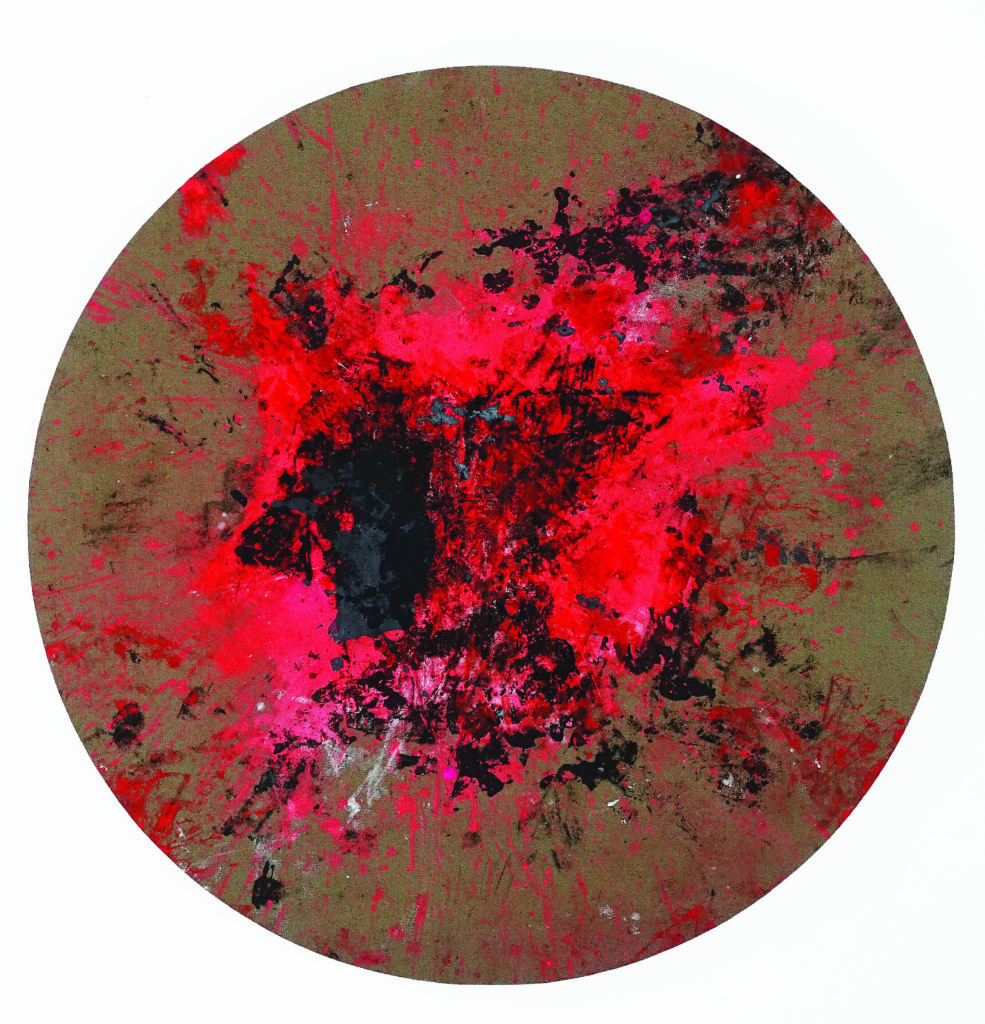Isaia Antonaci (born in Sesto San Giovanni, 1985) trained in Painting at the Brera Academy of Fine Arts, developing a path that merges physical action and a transcendent dimension. His research originates from a post-vandal aesthetic, rooted in the underground scene and shaped by a long-standing practice of martial arts—elements that have transformed gesture from impulsive act into an essential, conscious, and meditative language.
At the core of his work lies the relationship between fullness and emptiness: each piece becomes a space for listening, where matter and absence are held in balance, and painting becomes an act of presence. The surface turns into a field of tension between interior and exterior, permanence and dissolution. Fragmentation and reconstruction of experience emerge as metaphors for the human condition: each work is built through layers, fractures, transparencies, silences.
Urban aesthetics evolve into an introspective code. Vandalism, in its origin, is a form of primal expression—a need to leave a mark, to exist in space through gesture. In this process, the brutality of the sign becomes ritual, the surface transforms into a sensitive skin: the wall, once a space of urgency, becomes a place of suspension. The underground memory remains as a visceral echo, yet is internalized into a form of visual discipline. Thus, post-vandalism merges with a contemplative tension, where gesture is no longer affirmation, but listening: a rarefied presence that allows identity to emerge as a trace, not as imposition.
As in the martial gesture, the pictorial action is not forced, but allowed to happen. It is a dialogue with matter that generates minimal forms, suspended surfaces, and imperceptible marks that reflect time, memory, and identity.
ITA
Isaia Antonaci (Sesto San Giovanni, 1985) si è formato in Pittura presso l’Accademia di Brera, sviluppando un percorso che unisce azione fisica e dimensione trascendente. La sua ricerca nasce da una matrice post-vandalica, nutrita da un’esperienza radicata nell’ambiente underground e da una lunga pratica nelle arti marziali: elementi che hanno trasformato il segno da impulso a linguaggio essenziale, consapevole, meditativo.
Al centro del suo lavoro c’è il rapporto tra pieno e vuoto: ogni opera si configura come spazio di ascolto, dove materia e assenza si equilibrano, e la pittura diventa atto di presenza. Il supporto si fa campo di tensione tra interno ed esterno, permanenza e dissolvenza. Frammentazione e ricomposizione dell’esperienza emergono come metafore della condizione umana: ogni lavoro nasce per stratificazioni, fratture, trasparenze, silenzi.
L’estetica urbana si evolve in un codice introspettivo. Il vandalismo, nella sua origine, è atto di espressione primaria: un bisogno di lasciare traccia, di esistere nello spazio attraverso il segno. In questo processo, la brutalità del segno diventa rito, la superficie si trasforma in pelle sensibile: il muro, da spazio di urgenza, si fa luogo di sospensione. La memoria underground permane come eco viscerale, ma viene interiorizzata in una forma di disciplina visiva. Così, il post-vandalismo si fonde con una tensione contemplativa, dove il gesto non è più affermazione, ma ascolto: una presenza rarefatta che lascia emergere l’identità come traccia, non come imposizione.
Come nel gesto marziale, l’azione pittorica non viene forzata, ma lasciata accadere. È un dialogo con la materia che genera forme minimali, superfici sospese, segni impercettibili che riflettono il tempo, la memoria, l’identità.
